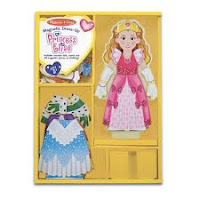Around the holidays there are always toys that seem to
become an item that is competitively shopped for, when I was younger I can
remember the craze for ‘Tickle me Elmo’.
But before buying your little ones gifts for the holidays because they
are the new ‘it’ toys, consider the following while shopping this year:
1. Use your IMAGINATION: Can the toy be played with in
different environments and used for different contexts? Try to find a toy that encourages
creative play. A lot of toys today are automatic or electronic and don’t leave
much to the imagination. Get back
to basics and get toys such as blocks, Leggos, Lincoln logs, a kitchen set,
action figures or dolls/dress up sets, all of which are a great way to get involved in play with
your child and facilitate conversation and using your imagination.
2. Does the toy encourage FINE MOTOR manipulation? The first few years are crucial for
developing important skills. Toys
such as inset puzzles/shape sorters are great for visual perception and fine
motor manipulation. Fine motor
pop-up toys provide a great opportunity to learn with trial and error and
require use of fine motor strength and manipulation (pushing, pulling,
pinching, turning, sliding). Also try and think if the toy
requires the child to use both hands together to help develop bilateral hand
skills (using hands together).
Zoom ball is a great game for bilateral hand skills in addition to
self-regulation, hand-eye coordination and it requires two players so it is a
great way to facilitate fun interaction.
An easel is also a great playful way to use fine motor skills. In addition, working on an easel
requires your child to use their muscles! Holding a paintbrush (or their
fingers) up to the paper for long periods of time is a great way to develop
those key muscles (core strength, upper body)


3. Think SENSORY:
Does this toy require use of more than one sensory system? Toys that light up or make noise or
have a stimulating texture are great for your little one if they require a
little extra for arousal, toys like these can really bring out the playful
side. I also love light up toys
for calming play before nap time or bedtime (Glo-doodle, glow in the dark pillow
pet). Remember that each child
with has different sensory needs and defenses, consult with your occupational
therapist for sensory toys that would work best with your child!
4. Does the toy encourage MOVEMENT? For those overactive tykes, games that require movement are great! One of my favorites is hullabaloo. This game not only encourages movement but also requires the child to attend to auditory directions, use visual perception and it can be played with peers/siblings to encourage social interaction. Velcro grab and catch is a great way to improve hand-eye coordination and provide a successful opportunity for your child to catch a ball if using a glove is a little too hard.
5. Does the toy help promote use of COGNITION? Toys mentioned previously such as puzzles/shape
sorters/pop-up toys are great for the younger ones. If your child is a little older, interactive board games can
be great for planning, thinking, and facilitating conversation such as ‘guess
who’. One card game I love is
‘blink’ by UNO, it is a matching game that requires your child to match by
either color, shape or number.


***I also want to recommend using Toys “R” Us Guide for Differently-Abled Kids. You can search online for your child based on skill (language, fine motor, visual, tactile etc….), you can also narrow your search by age, gender, brand and price. I highly recommend using this site as a guide for your shopping!!!
Each child has different needs, if
you a still struggling with what to get for your child, contact your
occupational therapist to get some ideas as to what would be best for the needs
of YOUR child.







